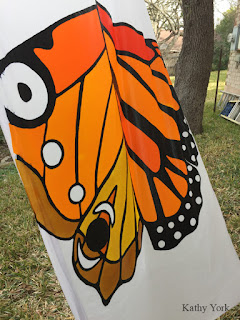Ocean Circles
10.5" x 10.5"
I have started a new series of work based on a palette of solid colors I bought. There are a lot of them, so there will be a lot of fabric to make things from. My inspiration is the ocean. I have missed visiting the beach where I grew up because of the pandemic. I also stopped going after my dad died, a little over 2 years ago. It was hard to face the grief in such a familiar place with so many memories. Now, I am ready to go, but also not ready to go. I miss the beach, the water, the waves, the salt breeze, the dunes, the seagulls and pelicans. Soon....
My plans for a big quilt began, and then I started having doubts, so I decided to make some small samples to see which one I would like the best. It is interesting to me that my favorite was not the crowd's favorite (according to Instagram). So I present to you, the crowd's favorite, Ocean Circles, the first in the series of five so far. It alludes to the constantly changing shoreline from the waves lapping along the shore and the wind blowing the sand and dunes.
The circles are hand cut and needle turned applique. I pieced the blocks before attaching the circles, then the quilting. This one is densely matchsticked quilted with a LOT of different thread colors. I don't mind changing the thread in my machine now that I have a needle threader. It make it so much easier and faster. I like the texture and how the lines of color seem to change with a different background color as they move across the quilt. I also wish I had made this a bit bigger on the outer squares, so that there would have been room to face it and turn the edge under. Or so I thought! After picking these 2 colors for the binding, I am really please with the reference to land and water. Sweet!
I also tried coloring these on paper first, to get an idea of the scale of the squares and circles. The watercolors just did not give the same feeling as the fabrics. In fact, if I had only used the paper for inspiration, I would have stopped. The feeling I got was closer to "ick" than "wow, that is so calming".
Of course, now that I look at the collection, I am having more ideas to investigate!



















